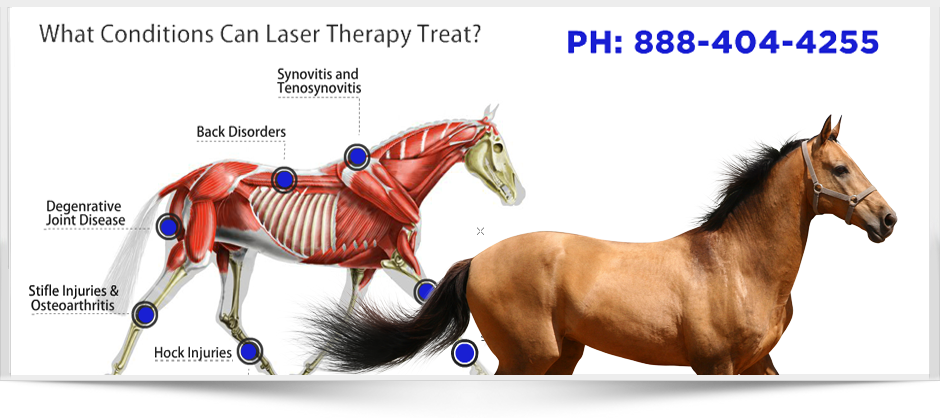Equine Therapy Success Stories: Real People, Actual Psychological Transformations
Equine Therapy Success Stories: Real People, Actual Psychological Transformations
Blog Article
Laser Treatment in Horse Treatment: A Modern Approach to Improving Steed Health And Wellness
Laser treatment has become a crucial method in equine treatment, making use of concentrated light energy to promote cellular fixing and speed up recuperation from a range of ailments. This non-invasive strategy is especially reliable in handling bone and joint injuries, wounds, and inflammatory problems, considerably boosting total horse health. By boosting mitochondrial task and improving ATP production, laser therapy not just improves flow but likewise gives considerable discomfort relief. As this cutting-edge treatment proceeds to gain grip, it opens fascinating possibilities for addressing persistent problems like arthritis and unguis problems, indicating a transformative change in veterinary treatment. What makes this modality particularly engaging?
Understanding Laser Treatment
Laser therapy, a non-invasive therapy modality, has actually acquired considerable traction in equine medication as a result of its efficacy in advertising healing and pain alleviation. This sophisticated restorative approach makes use of concentrated light power to penetrate cells, promoting mobile fixing and regrowth. The underlying device entails the excitement of cellular mitochondria, causing boosted production of adenosine triphosphate (ATP), the energy currency of cells. Boosted ATP degrees accelerate tissue repair work processes and lower swelling, making laser treatment especially effective for dealing with bone and joint injuries, injuries, and other inflammatory conditions in steeds.
There are several sorts of lasers used in equine treatment, each with certain wavelengths and power outputs customized to different healing requirements. Low-level laser treatment (LLLT), likewise known as cool laser treatment, employs reduced power levels to boost cell feature without causing thermal damages. High-intensity laser therapy (HILT), on the other hand, uses higher power levels to accomplish much deeper cells penetration and even more substantial restorative effects.
Veterinarians make use of various laser tools and techniques relying on the condition being dealt with and the preferred deepness of tissue infiltration. Correct training and know-how are essential for guaranteeing the secure and efficient application of laser treatment, thus optimizing its therapeutic possibility while minimizing threats.
Benefits for Equine Wellness
With a solid understanding of how laser therapy works, it is essential to explore its numerous advantages for equine wellness. By promoting cellular feature, laser treatment promotes faster wound recovery and help in the regeneration of damaged cells.
In addition, laser treatment has been shown to boost flow, thus improving blood circulation to influenced locations. Improved circulation makes certain that crucial nutrients and oxygen are supplied much more efficiently, facilitating the recovery process. In addition, laser therapy's anti-inflammatory effects aid in decreasing swelling and pain, which is vital for the general well-being of the steed.
Pain management is an additional considerable benefit. By launching endorphins and blocking discomfort signals, laser therapy gives reliable, non-invasive relief from both severe and persistent pain. This can add to improved wheelchair and lifestyle for the pet.
Lastly, laser treatment is a non-invasive treatment choice, minimizing the threat of problems related to even more invasive treatments. Its adaptability and efficacy make it an indispensable tool in modern-day horse veterinary medication.
Common Problems Treated

One more prevalent problem treated with laser treatment is joint inflammation. Furthermore, laser therapy is used in the monitoring of injuries.
Horse breathing conditions, such as recurring air passage blockage (RAO), likewise respond positively to laser therapy. Laser treatment is beneficial in dealing with hoof issues, including laminitis and abscesses.
Procedure and Safety And Security
Carrying out laser treatment in equine treatment entails a precise treatment to ensure both effectiveness and safety and security. Equine Therapy. The procedure starts click here to read with a complete veterinary evaluation to establish the suitability of laser therapy for the steed's specific condition. As soon as deemed proper, the therapy area is prepared by cleaning and, if needed, clipping the hair to boost laser penetration
The professional has to select the appropriate kind of laser, typically a low-level laser (LLLT) or a high-power laser (HPL), depending upon the problem being dealt with. The laser device is then calibrated to the proper wavelength, power, and period setups. During the application, the specialist relocates the laser over the targeted location in an organized manner, guaranteeing constant and also direct exposure.
Safety and security protocols are strictly complied with, including making use of safety glasses for both the practitioner and the horse. Additionally, it is important to keep an eye on the steed for any kind of indicators of pain or adverse reactions throughout the procedure. Post-treatment, the horse is frequently provided a period of rest to allow the healing impacts to manifest.

Future of Horse Laser Therapy
As improvements in veterinary medication proceed to unfold, the future of equine laser treatment holds considerable assurance. Emerging modern technologies and deeper clinical insights are established to refine and broaden the applications of laser treatment for equines.
In addition, ongoing study into the molecular and cellular devices of laser therapy will likely produce optimized procedures customized to specific conditions, boosting effectiveness and minimizing therapy times. Personalized therapy strategies based on genetic and biochemical pens can become a truth, making certain that each horse click to find out more gets one of use this link the most appropriate and efficient treatment.
Furthermore, regulatory improvements and standardization of methods will enhance the reputation and reliability of laser therapy in equine technique. Equine Therapy. As these innovations continue to emerge, equine laser therapy is positioned to come to be an indispensable component of veterinary care, offering improved recovery and boosted lifestyle for horses globally
Final Thought

Report this page